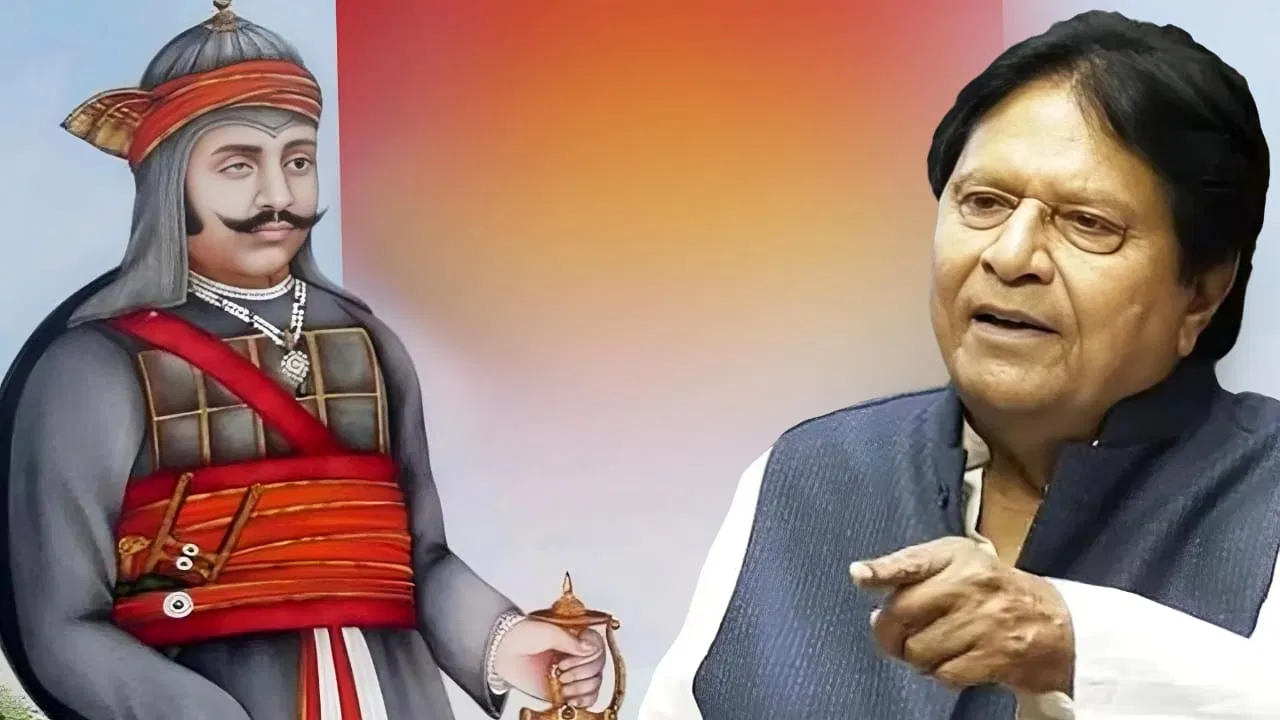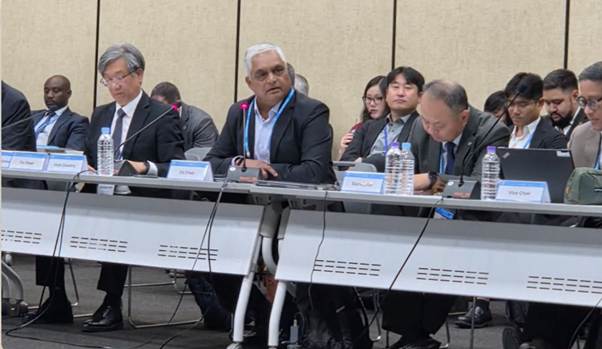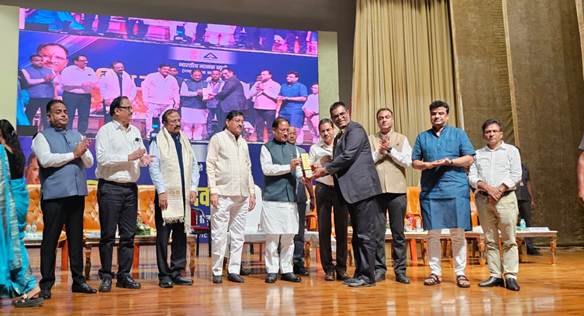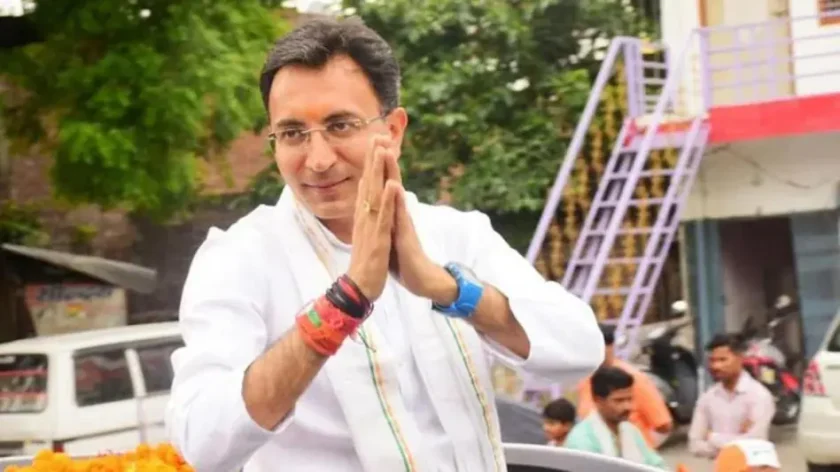New Delhi: The Rana Sanga controversy erupted like a thunderclap in late March 2025, shaking India’s political landscape and reigniting debates over history, honor, and identity. What began as a single remark in Parliament spiraled into a saga of protests, vandalism, and a fierce clash between reverence for a Rajput icon and the gritty realities of political sparring.
On March 21, 2025, during a Rajya Sabha session, Samajwadi Party (SP) MP Ramji Lal Suman, a Dalit leader from Uttar Pradesh, dropped a historical bombshell. Speaking on the Mughal ruler Babur’s arrival in India, Suman asserted that Rana Sanga, the 16th-century Rajput king of Mewar, was a “traitor” who had invited Babur to defeat Delhi’s Sultan Ibrahim Lodi. Citing Babur’s memoir, the Baburnama, Suman argued that Sanga’s actions paved the way for Mughal dominance in India—a claim that flipped the traditional narrative of Sanga as a valiant resistor of foreign invaders. His words, delivered with defiance, were meant to challenge what he saw as a one-sided glorification of history, but they landed like a match in a tinderbox.
Rana Sanga, or Maharana Sangram Singh I, ruled Mewar from 1508 to 1528 and is etched in Indian lore as a symbol of Rajput valor. Despite losing an arm, an eye, and suffering 80 wounds in battle, he fought relentlessly against regional sultans and, later, Babur himself at the Battle of Khanwa in 1527. Historians note that Sanga’s ambition was to unite Rajput clans against external threats, though his defeat by Babur’s gunpowder-armed forces marked a turning point in India’s medieval history. Suman’s accusation—that Sanga colluded with Babur—contradicted this heroic image, igniting instant outrage.
The reaction was swift and visceral. By March 26, members of the Karni Sena, a Rajput organization known for its fierce defense of caste pride, descended on Suman’s residence in Agra. Videos captured a chaotic scene: dozens of protesters pelting stones, smashing windows, and vandalizing cars parked outside. Some climbed walls, others tried to breach barricades, and a few allegedly attempted to run over police with an SUV. One officer was injured as authorities struggled to contain the mob. Karni Sena leaders, like Mahipal Makrana, called it a “trailer,” warning of bigger protests unless Suman apologized—preferably by “rubbing his nose on the ground” at a Rana Sanga memorial.
The violence didn’t stop in Agra. Protests flared across Uttar Pradesh, Rajasthan, and Madhya Pradesh, with effigies of Suman torched and slogans honoring Sanga’s bravery echoing through the streets. In Aligarh, a Hindu outfit leader named Mohan upped the ante, announcing a Rs 25 lakh bounty for Suman’s death—a chilling escalation that underscored the raw emotion at play. Meanwhile, Karni Sena chief Suraj Pal Singh Amu demanded apologies from both Suman and SP leader Akhilesh Yadav, branding the remark an insult to a “hero who defeated Mughals.”
The Bharatiya Janata Party (BJP), ever quick to champion historical icons, pounced on the opportunity. On March 28, Rajya Sabha erupted as BJP MPs, led by Dr. Radha Mohan Das Agarwal, condemned Suman’s statement as an affront to national pride. “We will not compromise until Congress and Suman apologize,” Agarwal thundered, linking the SP’s stance to its INDIA bloc ally. Parliamentary Affairs Minister Kiren Rijiju called the remark “highly condemnable,” while Union Minister SP Singh Baghel accused Suman of “polarizing and appeasing Muslims” with a distorted narrative. In Lok Sabha, BJP’s Ravi Shankar Prasad and Rao Rajendra Singh hailed Sanga as a “synonym of valor,” insisting the nation wouldn’t tolerate such insults.
Rajasthan’s BJP leaders piled on. Chief Minister Bhajan Lal Sharma labeled the comment an attack on every warrior who died for India, and Deputy CM Diya Kumari praised Sanga’s role in safeguarding Indian culture. Even celebrity MP Kangana Ranaut joined the chorus, calling Sanga “a symbol of self-respect and freedom.” The BJP framed the controversy as a battle over heritage, positioning themselves as Sanga’s defenders against the SP’s alleged revisionism.
Suman, unfazed, doubled down. On March 27, speaking to the media, he refused to apologize, insisting his claim was a historical fact rooted in the Baburnama. “Rana Sanga fought bravely but lost. Who can deny history?” he asked, accusing his critics of distorting his intent. He also alleged the Agra attack aimed to harm his family, notifying Rajya Sabha Chairperson Jagdeep Dhankhar of the threat to his safety. SP chief Akhilesh Yadav backed him, dismissing the uproar as BJP’s attempt to “weaponize history” for communal and caste division. “We don’t question Sanga’s bravery,” Yadav posted on X, “but if Suman referred to a page of history, what’s the issue?” He even suggested CM Yogi Adityanath, present in Agra during the attack, had tacitly approved it—a charge the BJP denied.

The SP’s Ambedkar Vahini wing rallied behind Suman, demanding increased security for the MP and condemning the protests as “unconstitutional.” They framed the backlash as an assault on a Dalit leader, giving the controversy a caste twist that deepened its complexity.
The INDIA bloc faced internal friction. Congress distanced itself, with MP Rajeev Shukla affirming Sanga’s revered status and urging restraint in such remarks. Party president Mallikarjun Kharge, however, called the Agra attack “anti-Dalit,” aligning with SP’s caste narrative while avoiding Suman’s historical claim. Meanwhile, BSP chief Mayawati slammed SP for “dirty politics,” accusing them of endangering Dalit leaders for electoral gain—a rare jab from a rival opposition figure.
Rajya Sabha Chairperson Dhankhar, caught in the crossfire, expunged Suman’s remark from official records but lamented its spread on social media. “Rana Sanga was a symbol of chivalry and patriotism,” he said on March 28, adjourning proceedings amid BJP sloganeering.
Historians offered nuance amid the chaos. The Baburnama mentions overtures from Indian rulers, including possibly Sanga, seeking Babur’s aid against Lodi, but no definitive evidence shows Sanga “invited” him to establish Mughal rule. Many argue it was Daulat Khan Lodi and Alam Khan, not Sanga, who directly lured Babur to India. Sanga’s later clash with Babur at Khanwa—where he led a Rajput coalition despite his injuries—cements his image as a resistor, not a collaborator. Yet, Suman’s point tapped into a broader debate: who bears responsibility for India’s medieval power shifts?
By March 31, 2025, the controversy showed no signs of fading. Parliament remained a battleground, streets simmered with protests, and social media buzzed with hashtags like #RanaSanga and #RamjiLalSuman. The clash morphed into a proxy war—Rajput pride versus Dalit assertion, BJP’s nationalism versus SP’s social justice, history versus politics. As Sanga’s legacy collided with modern fault lines, one thing was clear: a 500-year-old warrior had stormed back into India’s present, wielding as much power in 2025 as he did in 1527.






